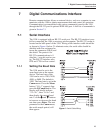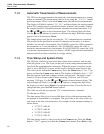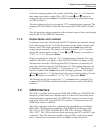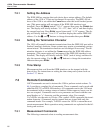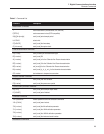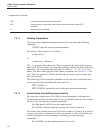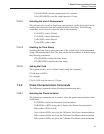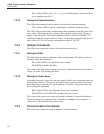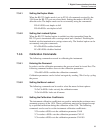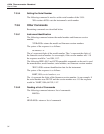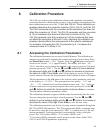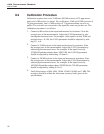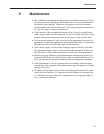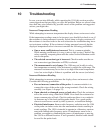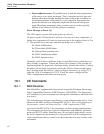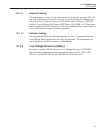
10 Troubleshooting
In case you run into difficulty while operating the 1504, this section provides
some suggestions that may help you solve the problem. Below are several situa
-
tions that may arise followed by possible causes of the problem and suggested
actions you might take.
Incorrect Temperature Reading
While attempting to measure temperature the display shows an incorrect value.
If the temperature readings seem to be incorrect you should first check to see if
the resistance is being measured correctly. Select ohms to display resistance. If
the resistance is incorrect refer to the next subsection for troubleshooting incor
-
rect resistance readings. If the resistance is being measured correctly but the
displayed temperature value is incorrect consider the following possibilities.
•
One or more coefficients are incorrect. This is a common mistake.
While entering coefficients it is easy to miss a digit or sign. Check all the
values carefully comparing them with the values on the calibration certifi-
cate for the probe.
• The selected conversion type is incorrect. Check to make sure the cor-
rect conversion type (thermistor or RTD) is selected.
• The measurement is out of range. The 1504 may not be able to calcu-
late temperature accurately if the resistance is outside the valid range. The
measured resistance may be too low or too high if the actual temperature
is too low or too high or if there is a problem with the sensor (see below).
Incorrect Resistance Reading
While attempting to measure resistance the display shows an incorrect value.
Consider the following possibilities.
•
Poor or incorrect connection of the probe. A common mistake is to
connect the wires of the probe to the wrong terminals. Check the wiring
carefully (see Figure 1 on page 12).
•
Open, shorted, or damaged sensor or lead wires. Check the resistance
across the sensor using a hand-held DMM. Also check the resistance be
-
tween common pairs of leads. Check to make sure there is no conductiv
-
ity between any of the leads and the probe sheath. Use a good-quality
sensor to avoid errors caused by drift, hysteresis, or insulation leakage.
•
Electrical interference. Intense radio-frequency radiation near the 1504
or the probe can induce noise into the measurement circuits resulting in
erratic readings. The 1504 is intended to operate in a laboratory environ
-
ment with limited radio-frequency noise. If interference seems to be a
problem you might try eliminating the source of interference or moving
the 1504 to a different location. A well-grounded, shielded cable should
be used for the probe leads.
39
10 Troubleshooting



